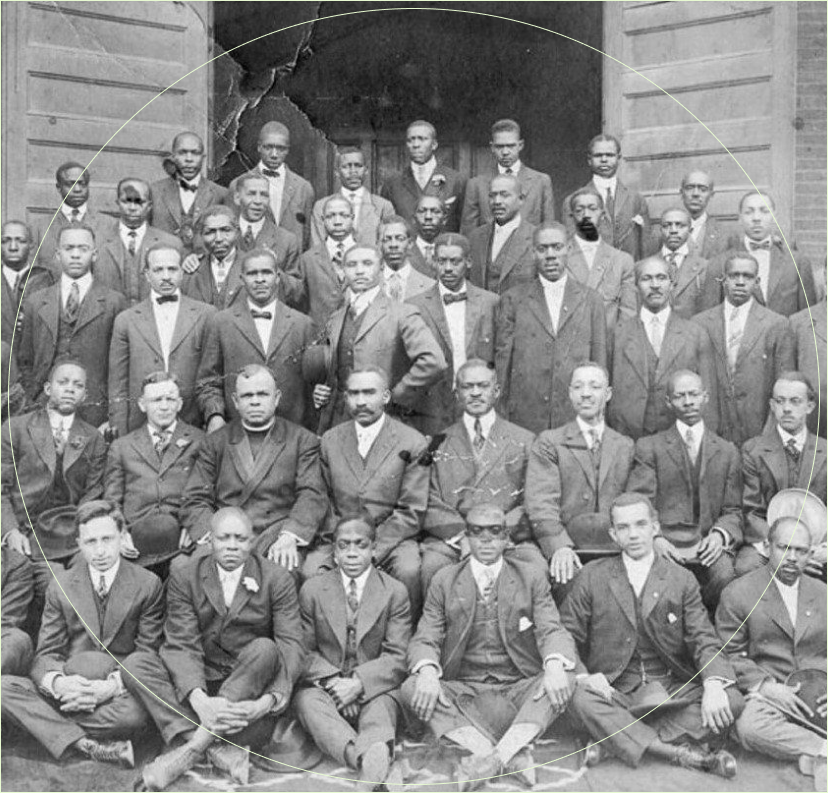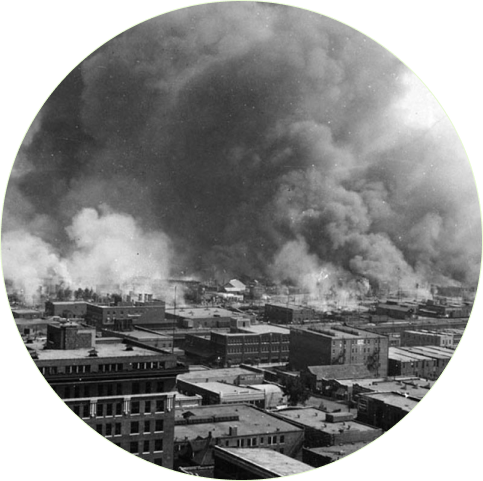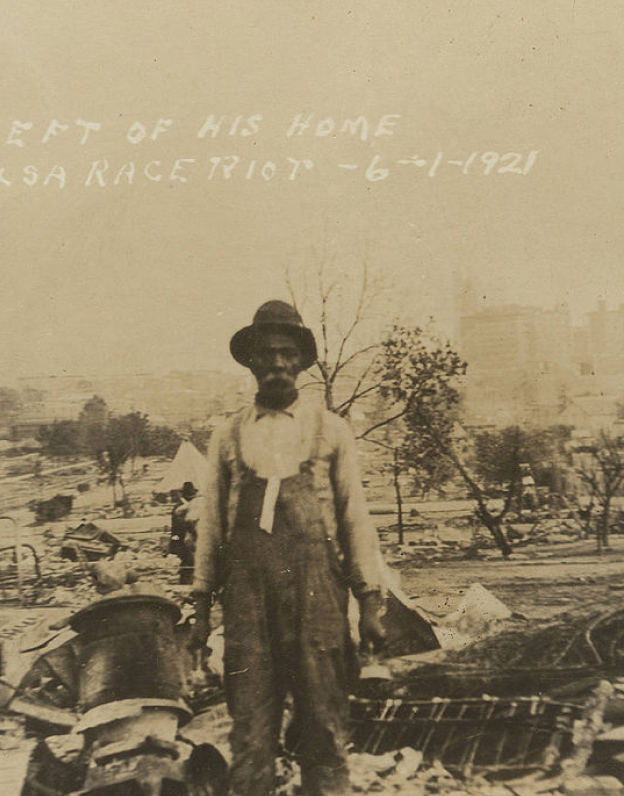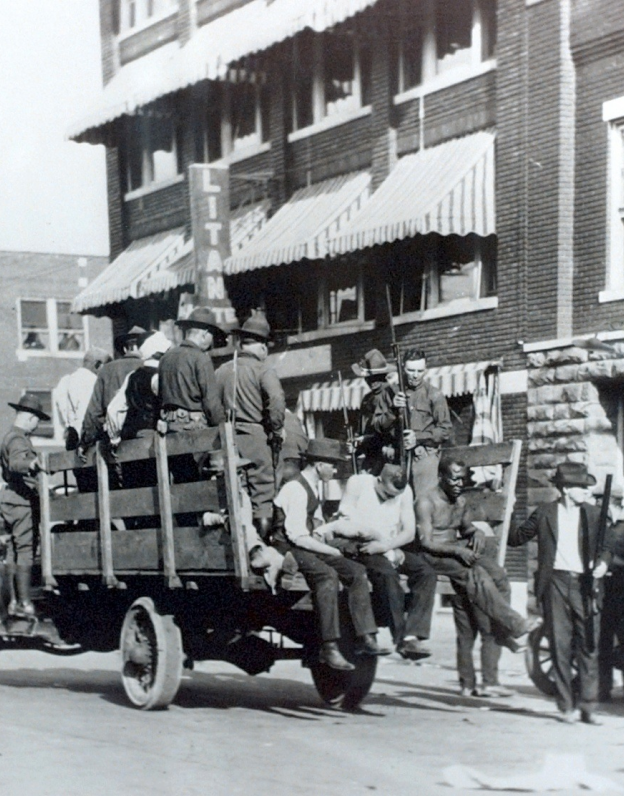Tulsa Black Wall Street Massacre: 1921

Black business leaders of the Greenwood community of Tulsa (pictured.) The 600+ businesses of Black Wall Street included 30 grocery stores, 21 churches, 21 restaurants, two movie theaters, schools, libraries, law offices, a hospital, a bank, a post office, and a bus system. Community members also owned six private airplanes. [#34]
In the 1920s, Tulsa, Oklahoma was 12 percent Black. Most of the Black population lived in Greenwood, which was often called the “Negro Wall Street of America” because of the prominent citizens (including at least three millionaires) who accumulated wealth through the oil boom.
Unwelcome downtown, except when working, Black residents of Greenwood had established their own newspapers, theaters, cafes, stores, and professional offices.

Smoke billowing over Tulsa during the massacre, 1921
In the early morning hours of June 1, 1921, Black Tulsa was looted and burned by white rioters.
Governor James Robertson declared martial law and called in the Oklahoma National Guard. Guardsmen assisted firemen in putting out fires, took imprisoned Black residents out of the hands of vigilantes, and imprisoned all Black Tulsans not already interned.
Over 6,000 people were held at the Convention Hall and the Fairgrounds, some for as long as eight days. [#35]

White rioters destroyed an estimated $200 million in Black property in today’s dollars.





